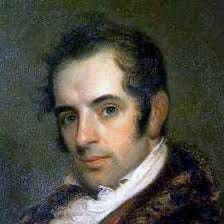#HudsonValley: Washington Irving’s Tarrytown and the house he made his home, Sunnyside
One of the best American writers of the 1800s lived in this converted farmhouse in Tarrytown.
Washington Irving was an acclaimed writer from the nineteenth century, whose works are well remembered today.
The New York City native (it was Irving who gave New York the Anglo-Saxon nickname “Gotham,” meaning “goat’s town”) served in the War of 1812. He then spent seventeen years traveling in Europe, beginning in 1815. He returned to America in 1832.
Three years later, he purchased a house in a town upstate in which he had stayed briefly as a child: Tarrytown.
Tarrytown and Sleepy Hollow
Located near what’s now known as the Mario Cuomo Bridge, Tarrytown is a former Dutch town. In 1780, an associate of Benedict Arnold was arrested as a spy and Arnold’s treasonous plans were exposed. Mark Twain and J.D. Salinger lived in Tarrytown for periods of time.
Adjacent Sleepy Hollow lies north of Tarrytown, bought by Adriaen van der Donck in 1664 and developed by Frederick Phillipse in 1672. Irving wrote his popular short story “The Legend of Sleepy Hollow” in 1820.
Irving first came to Tarrytown in 1798 to escape from an outbreak of yellow fever in Manhattan. He visited Hudson Valley towns a number of times throughout his life. His other famous short story, “Rip van Winkle,” is set in the Catskill Mountain area.
Washington Irving’s home, Sunnyside
When Irving visited his nephew in 1832, he first noticed the property then known as Wolfert’s Roost, a stone farmhouse with only two rooms. It inspired a story by Irving. To that point, he had no home of his own, so he bought the Roost in 1835 for $1800.
Irving arranged renovation plans for the house with amateur architect and painter George Harvey. He had an Elizabethan-style house, and Irving wanted something similar.
Sir Walter Scott’s castle Abbotsford, in Scotland inspired the name “Sunnyside.” Irving had visited it in 1816.
During the first two years he owned the property, Irving and Harvey extended the cottage’s rear, added a porch that looked out over the Hudson, redid the facade in a Gothic style, and installed chimneys. They also replanted the surrounding landscape with a variety of species, accompanied by footpaths, benches, and a bulwark, all along the Hudson bank.
In 1842, Irving became minister to the Spanish court of Queen Isabella II. While he was away from Sunnyside, his brother Ebenezer took over the place.
Washington returned five years later. Among the additions he made upon his return included a three-story tower to better accommodate not only his staff but his nieces, who were frequent residents.
In 1854, the nearby town of Dearman changed its name to Irvington in his honor.
The National Gallery of Art has more detail about Sunnyside.
Sunnyside after Irving’s death
Irving died in 1859. His family left Sunnyside essentially unchanged until around the turn of the century, when his great-nephew Alexander Irving made modifications of his own.
By 1945, millionaire John Rockefeller saved Sunnyside from the wrecking ball by purchasing it, restoring it, and opening it to the public. In the sixties, it was declared a National Historic Landmark and was put on the National Register of Historic Places.
Today Sunnyside operates as a museum.
————————
Have you been to Sunnyside?




